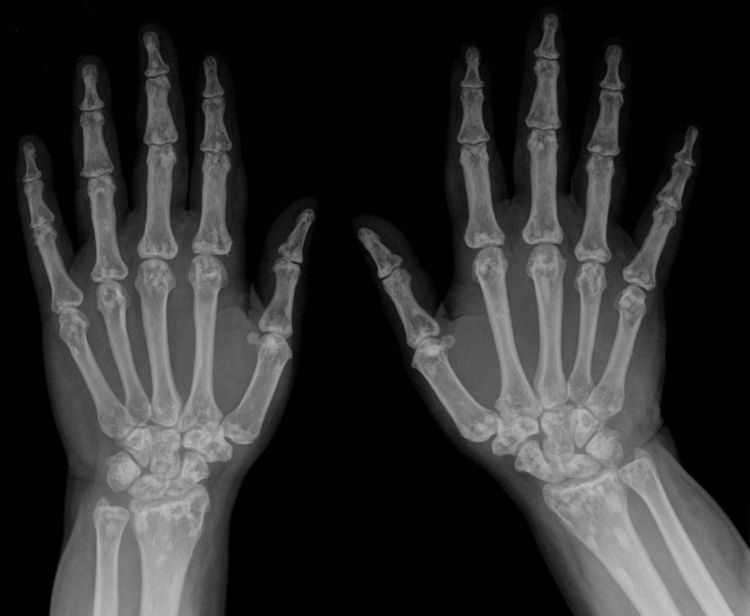Specialty medical genetics ICD-9-CM 756.53 DiseasesDB 30071 | ICD-10 Q78.8 OMIM 166700 eMedicine derm/733 | |
 | ||
Osteopoikilosis is a benign, autosomal dominant sclerosing dysplasia of bone characterized by the presence of numerous bone islands in the skeleton.
Contents
Clinical features
The radiographic appearance of osteopoikilosis on an x-ray is characterized by a pattern of numerous white densities of similar size spread throughout all the bones. This is a systemic condition. It must be differentiated from blastic metastasis, which can also present radiographically as white densities interspersed throughout bone. Blastic metastasis tends to present with larger and more irregular densities in less of a uniform pattern. Another differentiating factor is age, with blastic metastasis mostly affecting older people, and osteopoikilosis being found in people 20 years of age and younger.
The distribution is variable, though it does not tend to affect the ribs, spine, or skull.
Epidemiology
Men and women are affected in equal number., reflecting the fact that osteopoikilosis attacks indiscriminately. Additionally, the disease is often associated with melorheostosis, despite the apparent lack of correlation between melorheostosis and genetic heritability. It has been tied to LEMD3. Buschke-Ollendorff syndrome is a similar condition, which is also associated with LEMD3.
